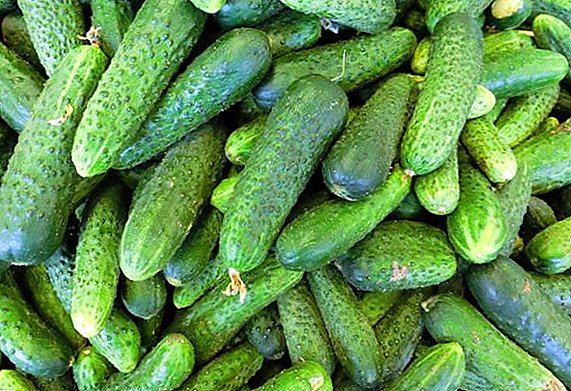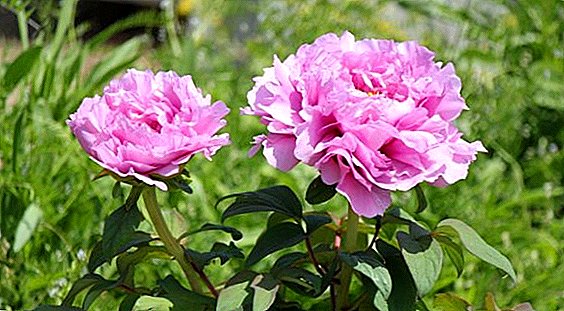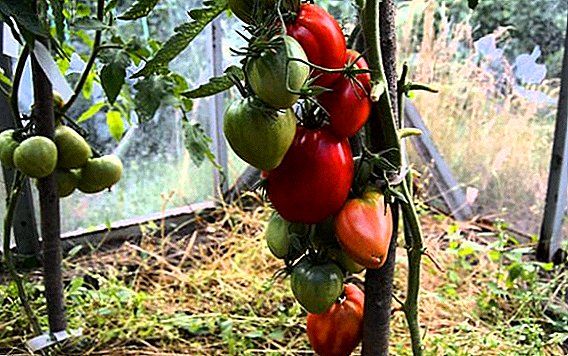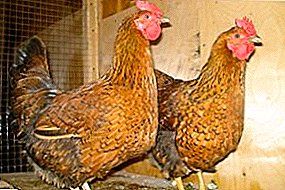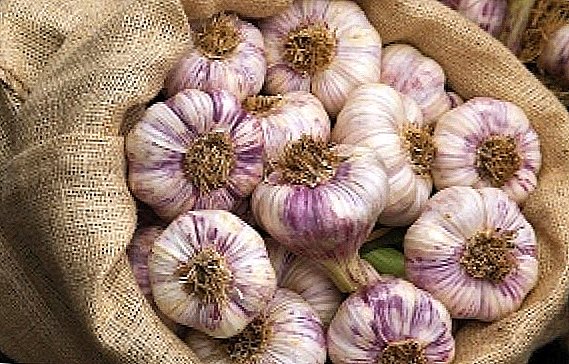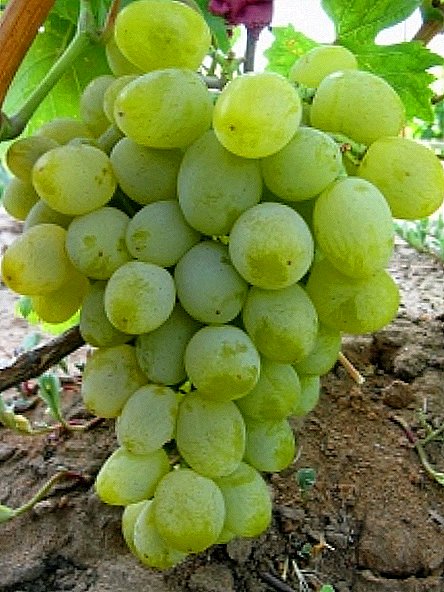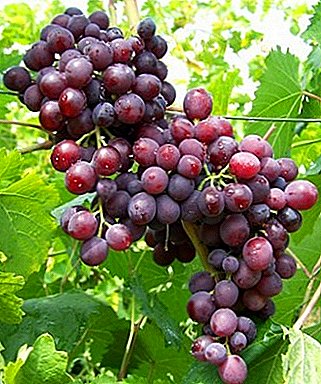 Hardly anyone today imagines cooking without the use of greenery. Besides the fact that it is a tasty and fragrant seasoning for various dishes, it is also a storehouse of nutrients. So, for example, parsley contains four times more ascorbic acid than lemon. And in 100 g of spinach there is 25% of iron from the daily norm necessary for the person. The best ways to preserve valuable substances for a long time in plants used in cooking are freezing and drying. How to dry the greens, let's talk in this article.
Hardly anyone today imagines cooking without the use of greenery. Besides the fact that it is a tasty and fragrant seasoning for various dishes, it is also a storehouse of nutrients. So, for example, parsley contains four times more ascorbic acid than lemon. And in 100 g of spinach there is 25% of iron from the daily norm necessary for the person. The best ways to preserve valuable substances for a long time in plants used in cooking are freezing and drying. How to dry the greens, let's talk in this article.
What can be dried
Drying is pretty simple, easy and cheap way blanks for the winter. In addition, dried products do not take up much space and do not require any special storage conditions.  However, to begin with, let's see what kind of greens can be dried so that it does not lose its properties.
However, to begin with, let's see what kind of greens can be dried so that it does not lose its properties.
These plants include:
- parsley;
- dill;
- basil;
- celery;
- tarragon;
- spinach;
- sorrel;
- leek;
- cilantro;
- fennel;
- caraway;
- thyme;
- savory;
- sage;
- mint;
- Melissa.

What is not recommended to dry
There are plants that are not recommended to be dried. Among them:
- salad;
- garlic;
- chervil.
There are also recommendations that parsley is better to freeze rather than dry, because its smell becomes slightly different.
Did you know? 454 g of greens contain the amount of vegetable protein that the human body needs per day..
Green preparation
Before drying for the winter greens, it must be carefully bruised, washed and dried well from moisture. The roots must first be cut. Yellow, dry, damaged leaves removed. Also need to get rid of thick leaves and coarse stems, old plants.
When purchasing herbs in the bazaar, it makes sense to soak them for 15 minutes in salted water (one tablespoon per 1 l of water). In the case of the presence of harmful additives, most of them must go. After the procedure, the grass should be washed, shake well and dried on a towel (paper or linen).  If you prefer to dry the cut plants, they must be crushed with a knife into pieces of 4-5 cm. When preparing by hanging it is necessary to collect the greens in bunches and tie them around.
If you prefer to dry the cut plants, they must be crushed with a knife into pieces of 4-5 cm. When preparing by hanging it is necessary to collect the greens in bunches and tie them around.
Check out the best recipes for winter parsley, dill, green onions, arugula, spinach, green garlic, garlic heads, cilantro, sorrel, rhubarb.
Drying methods
There are two main ways of drying:
- in the open air;
- in special conditions - using a dryer, oven, microwave.
Did you know? Homeland spinach is considered Persia. In Persian, this word is translated as "green hand".
In the open air
To dry the greenery in the fresh air, you will need a twine or parchment paper, depending on which method suits you best - vertical (in limbo) or horizontal (in unfolded state).
Drying in fresh air should be carried out in warm weather.  Vertical drying technology is as follows:
Vertical drying technology is as follows:
- The culled, washed and dried grass is tied with rubber bands or threads in bunches of five or six twigs.
- We hang the bundles under a canopy with leaves down so that the air access to them is good, but at the same time they are not blown heavily by the wind, and the sun's rays do not fall on them. When exposed to the sun, the grass will lose most of the nutrients, when exposed to the wind, the smell will evaporate.
- The distance between the beams should be about 7-10 cm.
- Periodically check the readiness of blanks. Drying takes from six hours to several days. If the greens are dried properly, it will be the same color as fresh. It should not crumble into dust.
Important! The shorter the drying process is, the more vitamins remain in herbaceous plants, and the better is their taste and aroma.
For hanging beams, in addition to the canopy, also fit the attic, balcony, loggia, veranda or other well-ventilated room.
In bunches it is good to dry parsley, dill, coriander.  For the horizontal method of drying the greens are spread on sieves, trays, pans or other surface. Flat plates will do. Under the bottom underlay parchment or a newspaper, canvas fabric. The grass is laid out in a thin layer so that one plant does not find another. From above you can cover it with gauze. During drying, the grass will need to be periodically turned over to prevent rot. Plants need to be covered from the sun.
For the horizontal method of drying the greens are spread on sieves, trays, pans or other surface. Flat plates will do. Under the bottom underlay parchment or a newspaper, canvas fabric. The grass is laid out in a thin layer so that one plant does not find another. From above you can cover it with gauze. During drying, the grass will need to be periodically turned over to prevent rot. Plants need to be covered from the sun.
To always have on hand fresh greens, organize on the windowsill a mini garden of herbs: dill, parsley, cilantro, basil, arugula, sage, rosemary, thyme, chabra, tarragon, oregano, lemon balm.
On the windowsill
On the windowsill can be dried in a horizontal way.
- On parchment paper or newspaper we lay out the grass. It is best if the layer is single, not higher than 1-1.5 cm. Otherwise, the drying process will be long and of poor quality.
- We mix the grass once or twice a day.
In the same way you can dry the plants on the loggia, balcony. 
In the electric dryer
If you often harvest greens for the winter, then there is a reason to buy an electric dryer for this purpose. This is not a very expensive machine that will help simplify the process and dry the plants qualitatively.
The drying process in the electric dryer is as follows:
- Washed, dried and crushed to 1.5-2 cm grass is placed in trays with a thin layer.
- If in the dryer there is a function of "Herbs", then we select it. If there is no such function, then set the temperature to 40-45 degrees.
- In order to achieve uniform drying of the entire batch, the trays will periodically need to be swapped.
- Usually the process of drying herbs in the dryer takes from two to six hours. For devices of different brands this time will be different. It should be clarified in the attached instructions.
Is it possible to dry in the oven
It is possible to dry herbs and in the oven. It is important to observe the necessary temperature, since too high a temperature leads to drying of the plants, loss of color and valuable substances.
We suggest you to get acquainted with the technology of drying herbs in the oven:
- The washed and dried grass is placed on a baking sheet with baking paper. Top, it is also desirable to cover with paper. Layer must be no higher than one or two centimeters.
- The oven is heated to the minimum temperature. It is best to carry out the drying at a temperature below 40 degrees. To achieve a low temperature, you can place a cork from wine or another object between the door and the oven, which will not allow the door to close completely. Thus, the temperature can be reduced.
- When the grass becomes sluggish, the temperature should be raised to 50 degrees.
- We keep the plants in the oven for two to four hours, periodically checking their readiness.
Important! It is not necessary to dry several types of herbs at the same time. So mix their smells.
Useful tips
- Dry greens can be in the microwave. It is placed on a paper plate, previously covered with a paper napkin. Top grass is also covered with a napkin. Dry the plants at maximum power for three minutes. After turning off the oven greens inspect. If there are undated specimens, bring them to readiness for another two to three minutes.
- Dried herbs perfectly replaces salt and reduces its use. Just need in the salt, which usually stands on your kitchen table, add a pinch of dry grass. Basil does a great job with this task.
- When drying, pay attention to the plants are not in contact with the metal. Otherwise they will lose their color and change it to dark. So, if you put plants on metal baking trays, then you should spread baking paper on them.
- Young plants are more amenable to drying.
- Different types of herbs must be dried separately (except in the dryer). If you plan to create a mixture of seasonings, then you need to mix them after they are dried.
- For drying, it is better to choose a window sill, which is not in the kitchen, because when cooking on the grass moisture will affect.
Important! As a rule, about 15% of the initial weight of the green mass remains after drying. For example, by drying dill in a 2 kg dryer, 220 g of dry product is obtained.
How and where to store at home
Store dried herbs best in glass containers (preferably dark) with tight-fitting lids. Tanks should be stored in a dark, cool and dry place. The main enemies of dried foods are moisture and mole.  There are some more recommendations on how to store dried dill and other spices at home. For example, cardboard boxes, hermetically sealed (sealed) plastic bags, paper and fabric bags are suitable for this.
There are some more recommendations on how to store dried dill and other spices at home. For example, cardboard boxes, hermetically sealed (sealed) plastic bags, paper and fabric bags are suitable for this.
Grind dried grass is recommended by hand - palms, mortar, hand mill. It is advisable not to use the grinder.
Properly dried herbs can be stored throughout the winter. Shelf life is 6-12 months.
Did you know? The ancient Greeks and the ancient Romans used dill to decorate their homes and for medicinal purposes.
Use dried herbs
Dried greens are great for adding to dishes from vegetables, meat, fish. It is put in the first courses, snacks.
When using dried spices it is necessary to know that they need to be entered into the dish earlier than fresh ones. So they will be able to fully give their flavor. Grind the dried ingredients must be immediately before adding to food.
Some herbs require a brief warming in a dry frying pan. So their smell increases.  Drying is one of the most ancient, simple and inexpensive methods of harvesting greenery for the winter. Using one of the ways to dry parsley and other greens at home, described above, you can enjoy a delicious, fragrant and healthy food filled with essential vitamins and valuable substances for the whole winter.
Drying is one of the most ancient, simple and inexpensive methods of harvesting greenery for the winter. Using one of the ways to dry parsley and other greens at home, described above, you can enjoy a delicious, fragrant and healthy food filled with essential vitamins and valuable substances for the whole winter.


